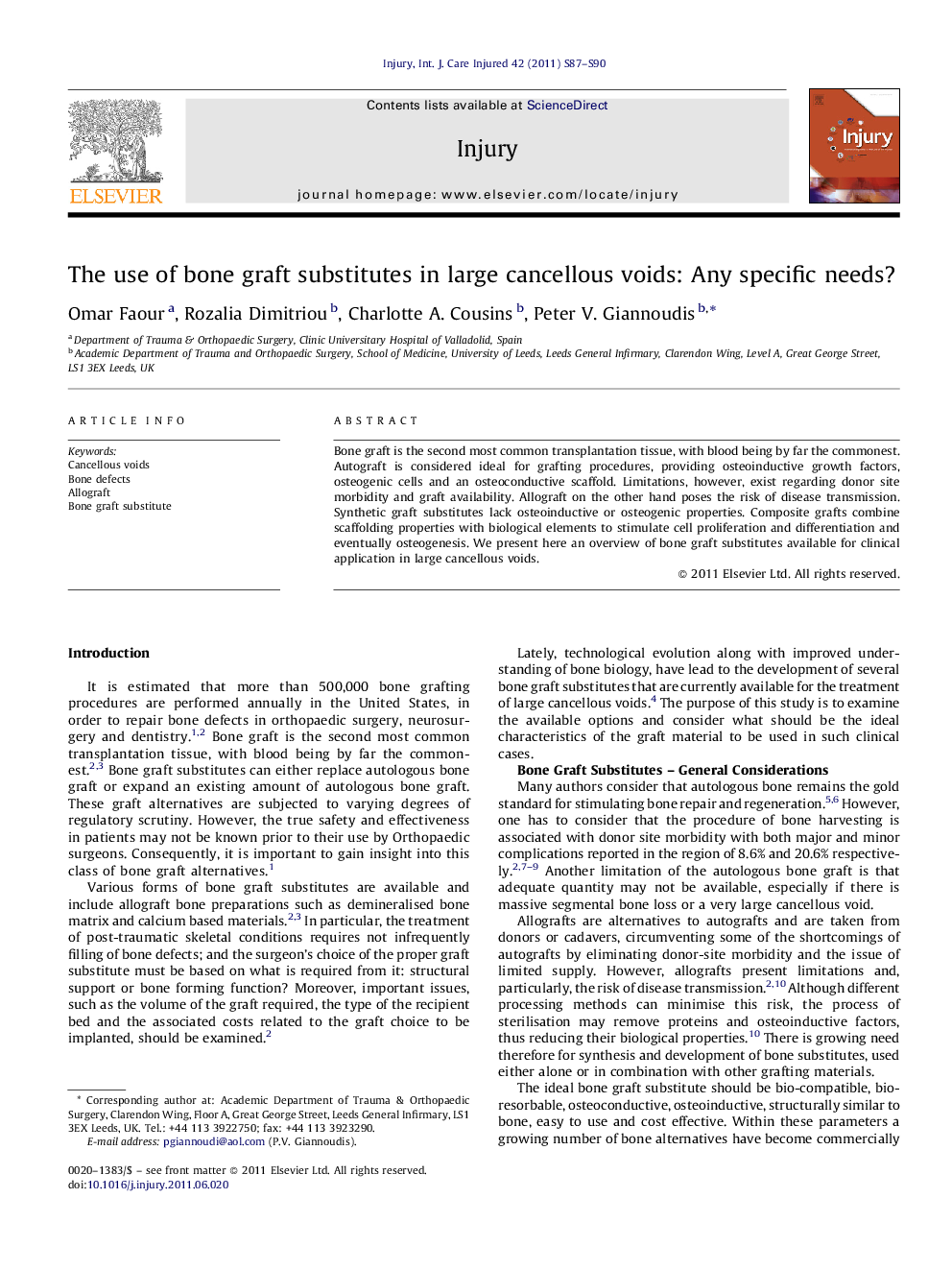| Article ID | Journal | Published Year | Pages | File Type |
|---|---|---|---|---|
| 6084372 | Injury | 2011 | 4 Pages |
Abstract
Bone graft is the second most common transplantation tissue, with blood being by far the commonest. Autograft is considered ideal for grafting procedures, providing osteoinductive growth factors, osteogenic cells and an osteoconductive scaffold. Limitations, however, exist regarding donor site morbidity and graft availability. Allograft on the other hand poses the risk of disease transmission. Synthetic graft substitutes lack osteoinductive or osteogenic properties. Composite grafts combine scaffolding properties with biological elements to stimulate cell proliferation and differentiation and eventually osteogenesis. We present here an overview of bone graft substitutes available for clinical application in large cancellous voids.
Related Topics
Health Sciences
Medicine and Dentistry
Emergency Medicine
Authors
Omar Faour, Rozalia Dimitriou, Charlotte A. Cousins, Peter V. Giannoudis,
